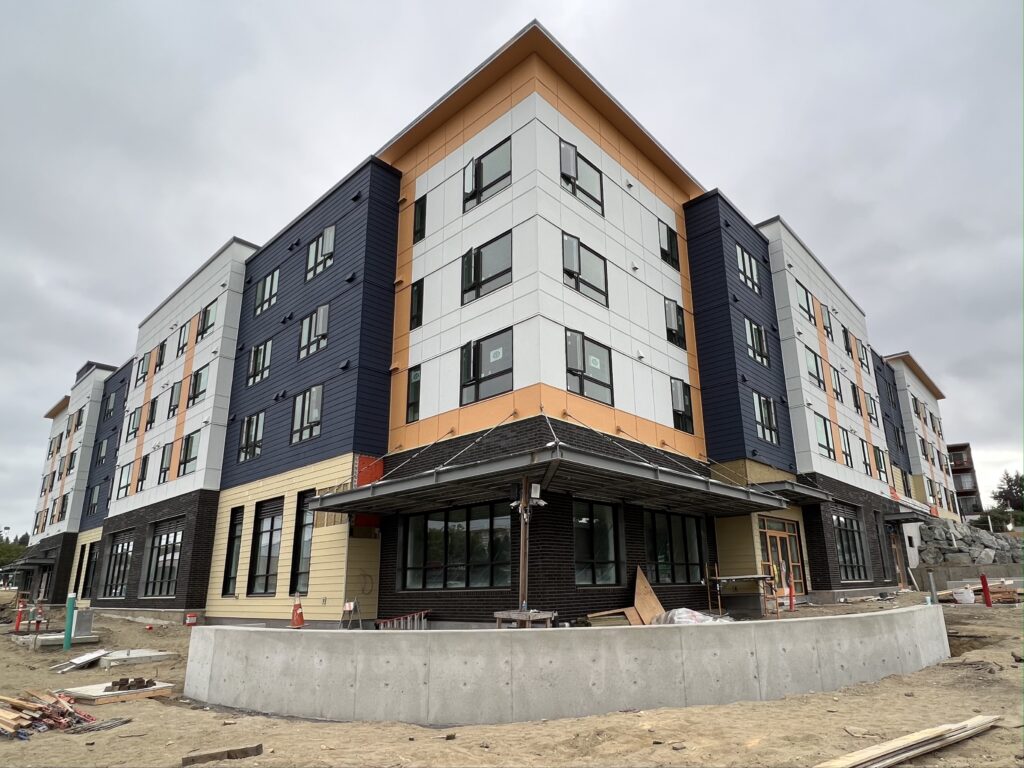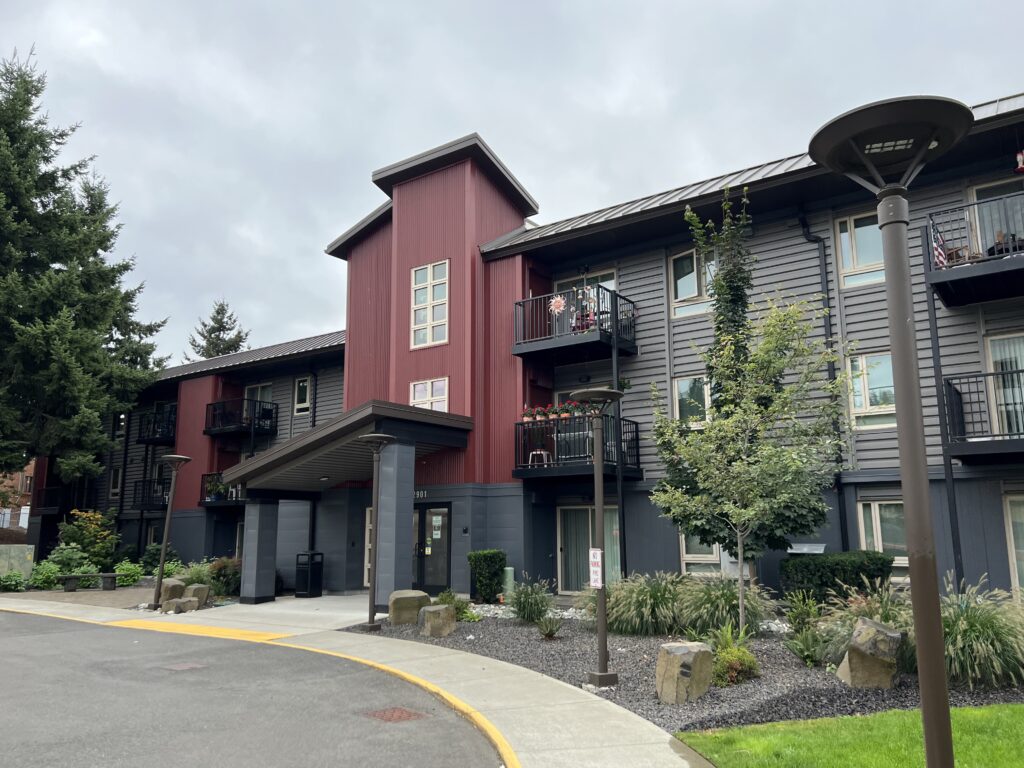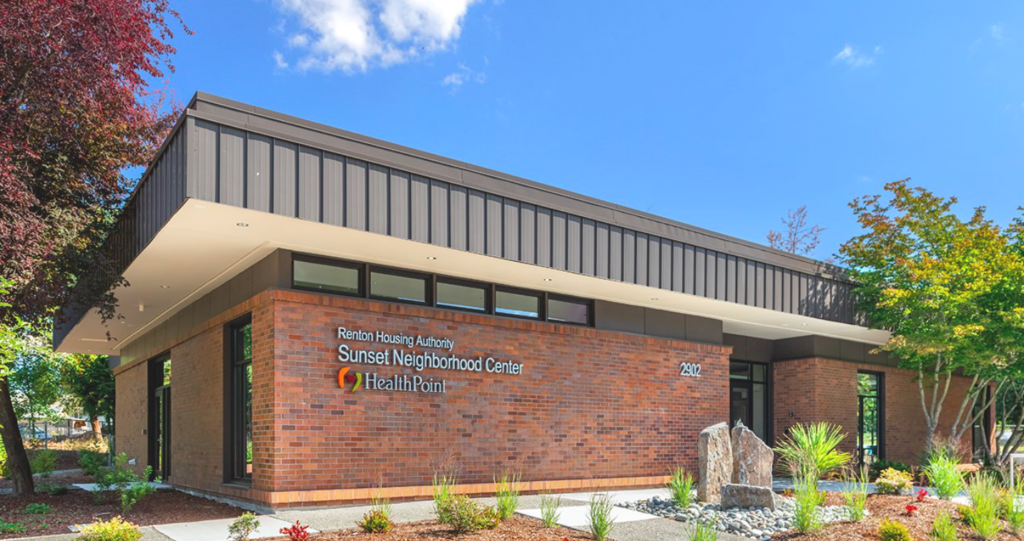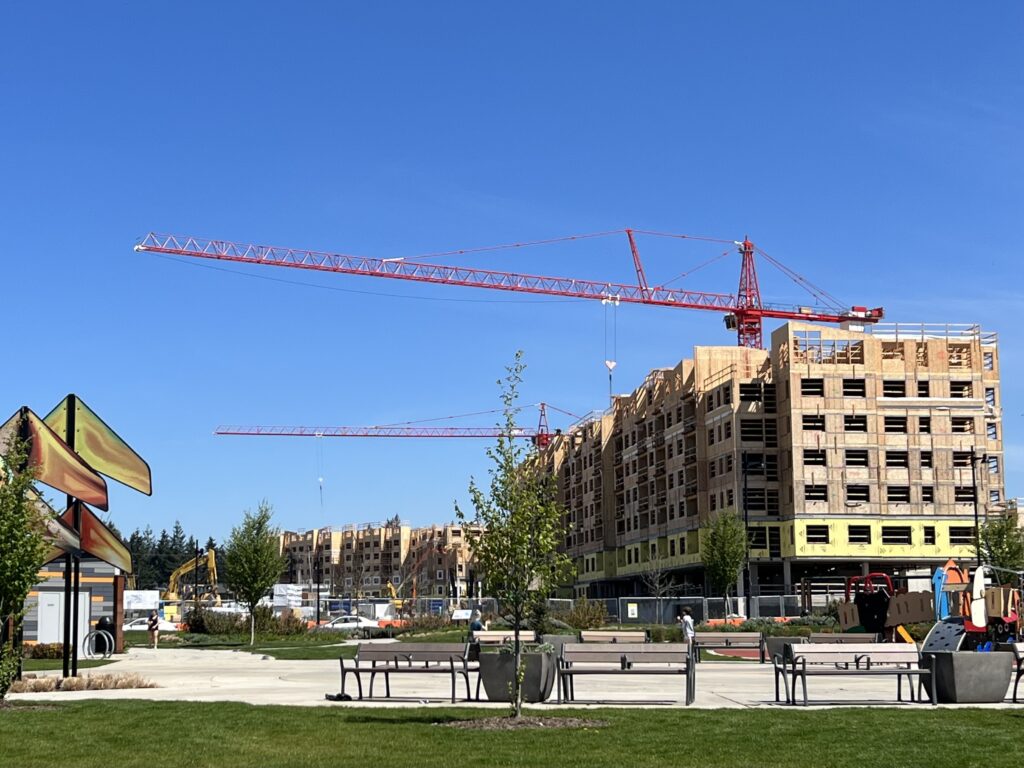
Sunset Gardens in Renton Highlands will include 76 units – studio and 1BR priced from 30%-50% of Area Median Income. (Picture taken today, 9/17/23, by Randy Corman)
Everyone is asking, what can we do to alleviate homelessness?
Our emergency shelters play an important role, but they are like hospital waiting rooms. If a hospital does not have the rooms and staff needed to serve all their patients, the answer is not to spend all the money building a bigger waiting room. The long-term solution to our housing crisis lies in permanent housing and treatment, not in more emergency shelters. (This focus, along with the immense cost, was why I questioned the KCRHA draft five-year plan that proposed spending 25 billion dollars on emergency sheltering, but included no permanent housing.)
As a society we must find a way to build housing that the vast majority of Washington residents can afford, and assist the remainder with dignified subsidized homes appropriate to their needs. We also must treat those with behavioral and addiction issues that hurt their ability to remain housed. Cities, Counties, the State of Washington, and the Federal Government all have major roles to play in this effort. Only when we have all our residents living indoors will we be able to look across our cities and feel truly proud of where we are.

Sustainable long-term housing: Renton Housing Authority’s Golden Pines, built in 1976 and recently refreshed, provides 62 units of low-income senior housing; part of a growing inventory of many hundreds of apartments that RHA maintains for low-income residents.
This a complex topic that I can’t cover with a single blog entry, so I’m going to use this entry to outline the problem as I see it, and identify sub-parts to the solution that I will delve into in follow-on blog entries.
I’ve seen lots of debate about whether homelessness is a housing problem or a drug/behavioral health problem. It is truly both, as there are many avenues into homelessness in our society. Working people can fall into homelessness along with people struggling with addiction and behavioral challenges; furthermore, homelessness exacerbates mental health issues, and can lead to addiction. So the fix involves helping people who are able to work but struggling with affordability, along with helping people who are ill to secure dignified accommodations.
(1) For those who are working, but can’t find affordable housing:
(a) We must make it a state-level and national goal to refocus on affordability as one of our prime metrics in our housing policies. We already prioritize other very important aspects of housing, like safety and energy efficiency. These are critical, and we need to reasonably maintain them. But affordability needs to go hand-in-hand with them.
(b) When regulatory changes are not enough, we must adequately fund subsidized housing programs, and build the necessary housing stock as a society to ensure everyone has a home.
(2) For those who are struggling with behavioral health issues or addiction, we must emphasize treatment:
(a) Residential treatment beds must be more widely available, and offer long enough treatment periods and enough follow-up that they achieve good outcomes
(b) Those who receive treatment and can return to family after treatment should do so when possible. If no family is available, they should be provided supportive living facilities that facilitate sobriety and mental health.
(c) Those unwilling to participate in treatment should be repeatedly encouraged and offered treatment. If they get arrested for committing low-level crimes, they should be incentivised to seek treatment as an alternative to incarceration.
(d) Those who are ill and refuse to accept treatment should still be provided appropriate housing, but only in adequately-monitored, sustainable facilities that will not become dangerous or dilapidated by their illness.
(3) We should help prevent homelessness for those currently housed:
(a) When someone who’s leasing an apartment encounters a rare one-time challenge paying rent, such as a car theft or health crisis, short-term rental assistance is the least expensive and most caring way for society to help.
(b) Prevent predatory landlords from taking advantage of vulnerable tenants through reasonable regulations that do not inadvertently dissuade good landlords and investors from providing more housing options.

Renton’s former Highlands Library has been remodeled by Renton Housing Authority and several partners to provide outpatient physical and mental health services, dental, and educational services. More residential treatment programs are needed throughout our region,
After 28 years as an elected official and 33 years as an engineer, I’ve already been following this plan for many years. As just one suburban council member, I could not accomplish it by myself, but I’m eager to share the details of the direction I’ve been trying to go and how this plan has guided my decisions along the way.
I would like to hear from readers before I publish all the details of this plan. Do you agree with the way I have outlined the solution? are there other sections I should add? Please let me know in the comments. And please check back in the coming days as I share the details of each element of this plan.


Recent Comments